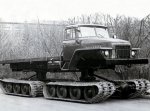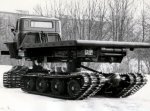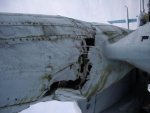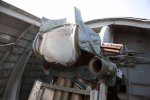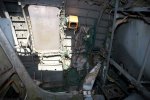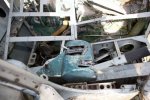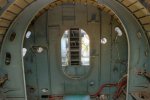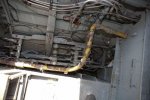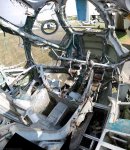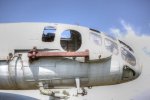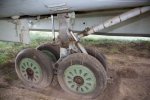Do you have any more pictures of the WIG from post 127? I have only seen similar 'from the front' photographs of that particular machine and am interested in what the rest looks like.
Great thread, I am enjoying it. Thank you.
![Thumbs Up [thumbzup] [thumbzup]](https://www.steelsoldiers.com/images/smilies/icon_smile_thumzup.gif)
Cheers
Especially for you ....
Soviet amphibious aircraft VAA-14
Performance:
Practical flight range - 2450 km;
Maximum speed - 760 km / h;
Practical ceiling 8000-10000 pm
The aircraft was designed to combat the rockets and multi-purpose submarines of the enemy in the near zone. Also considered the use of aircraft as the search and rescue. The design is mainly made of aluminum alloy with corrosion-resistant coating.
In front compartment was placed triple cockpit ( catapulted during emergency situations) and provides a rescue crew in all flight modes without the use of ejection seats. Behind the was cab is a engine compartment and weapons bays.
The aircraft was equipped with all the necessary operating systems: fire extinguishing system in the compartments of the power plant, defrosting system: fed hot air on the wing, tail and air intake, as well as the oxygen system and air conditioning system in the cockpit.
In antisubmarine version was to be located in the bomb bay with various armed weighing up to 2000 kg: 2 torpedo or 8 air mines IGMD-500 (an increase in payload to 4000 kg) or 16 bomb PLAB-250. Also considered the use of aircraft as the search and rescue. To defend the route patrols in this aircraft provided for defensive complex for providing create of active and passive jamming.
Bring to a series-built VAA-14 was not possible. After the death Chief Engineer of design work on the aircraft were suspended and then terminated. In the pilot plant had been launched two amphibians, which was called 1M and 2M. By the summer of 1972 VAA-14-1M was made. The first flight of the VAA-14 took place on Sept. 4, 1972. The test program was completed in 1975, the aircraft flew 107 missions (103 hours).
Specimens for museum aircraft VAA-14 (14M1P) was transferred to Monino of Taganrog in 1987.
He was taken by water in the suburban Lytkarino, where it was unloaded on the shore. In anticipation of the arrival of the helicopter, he remained unattended and was partially destroyed and damaged by unknown persons.
The damaged aircraft was delivered to the Mi-26 helicopter to the museum, where it is currently disassembled.
About the creator of the aircraft:
Roberto Bartini Lyudogovich. Real name - Roberto Oros di Bartini (Roberto Oros di Bartini), was born May 14, 1897 (Fiume, Austria-Hungary), died Dec. 6, 1974 (Moscow).
The pupil of his wife of Baron Ludovic Oros di Bartini. Participant 1-st World War. A member of the Communist Party of Italy. Soviet aircraft builder . Was prisoner. Commander of the Order of Lenin.


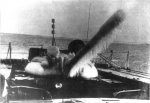

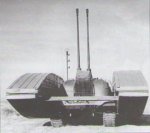




 )
)
